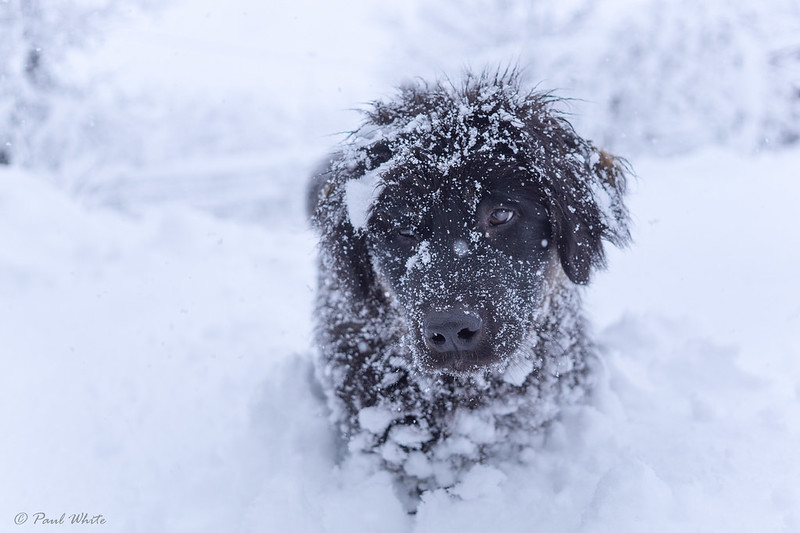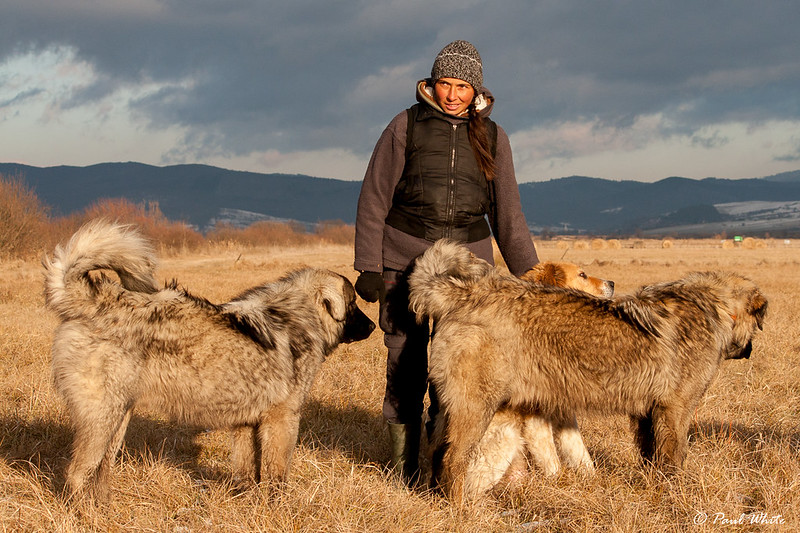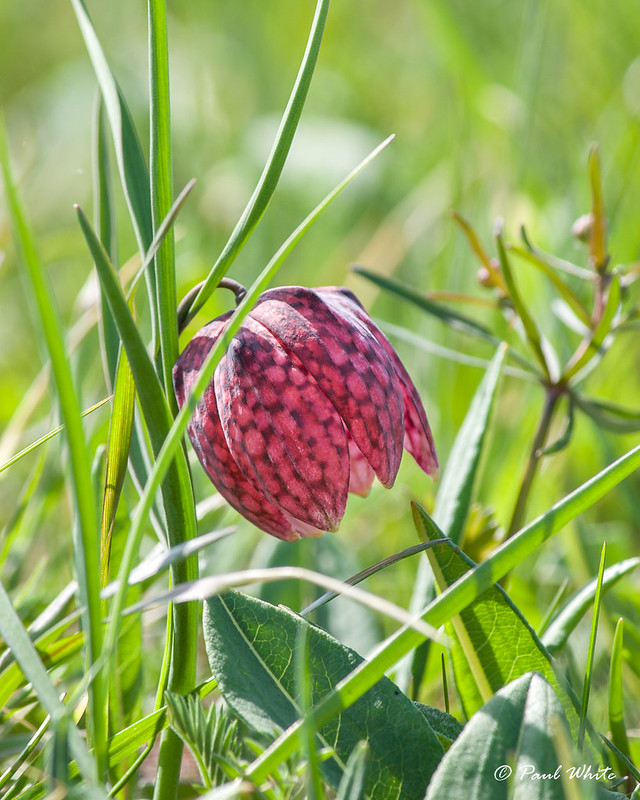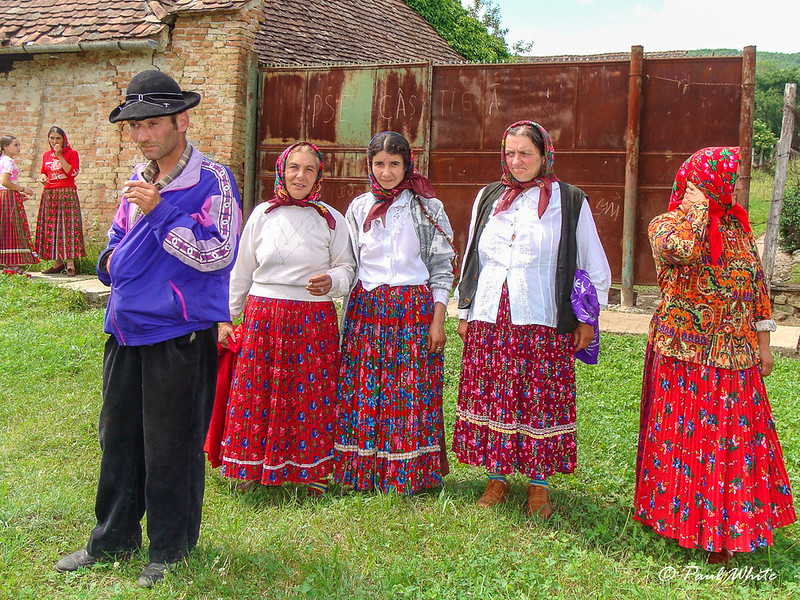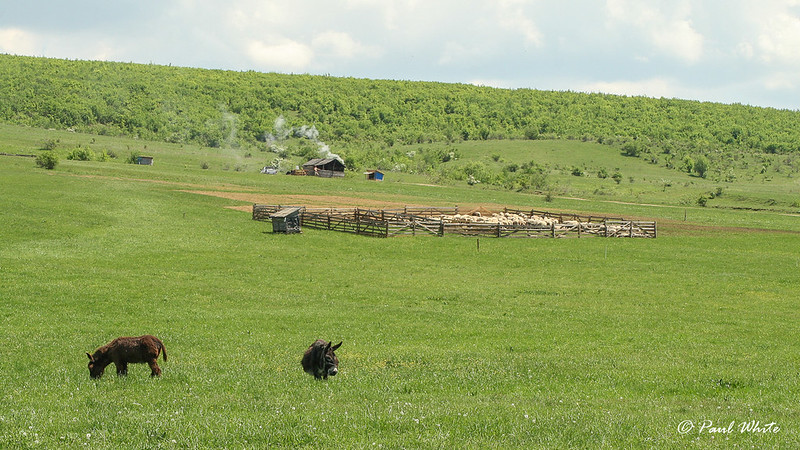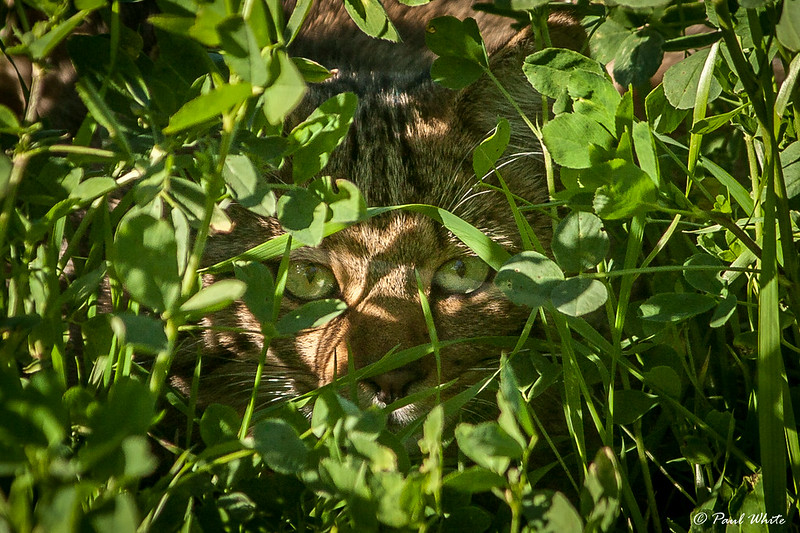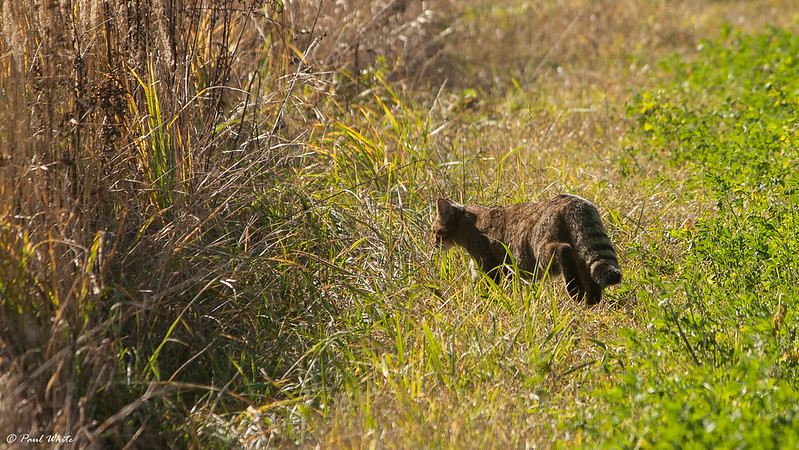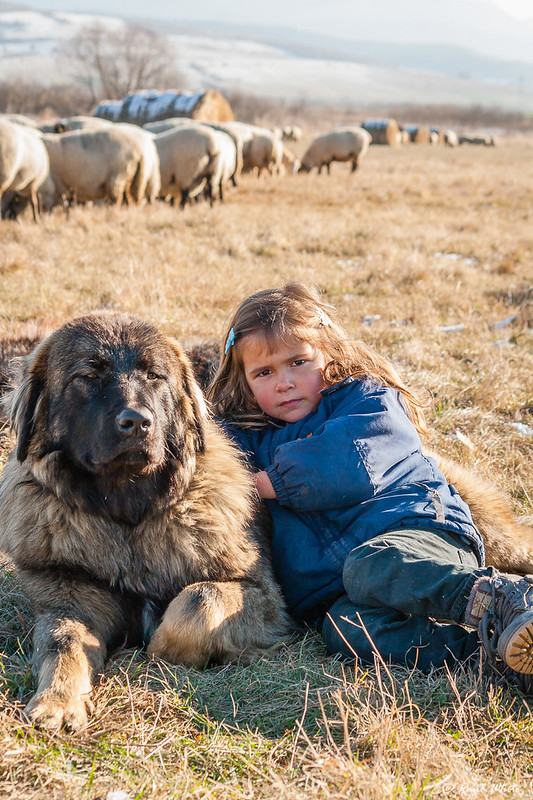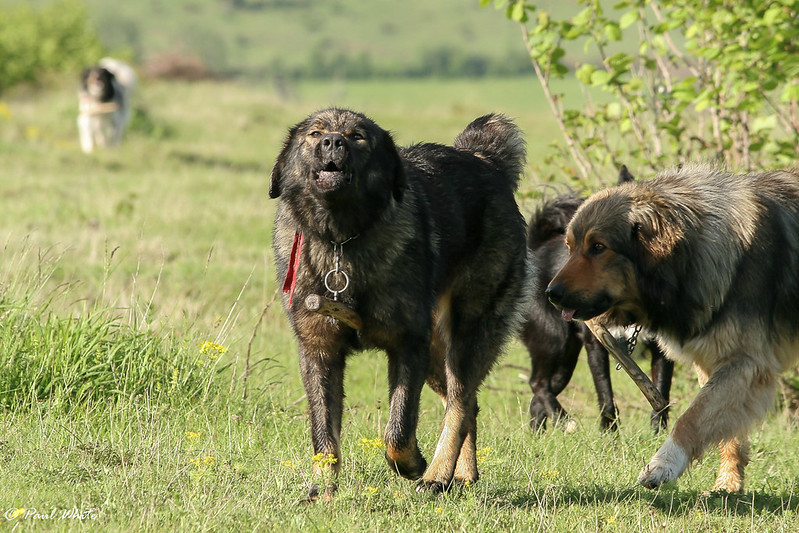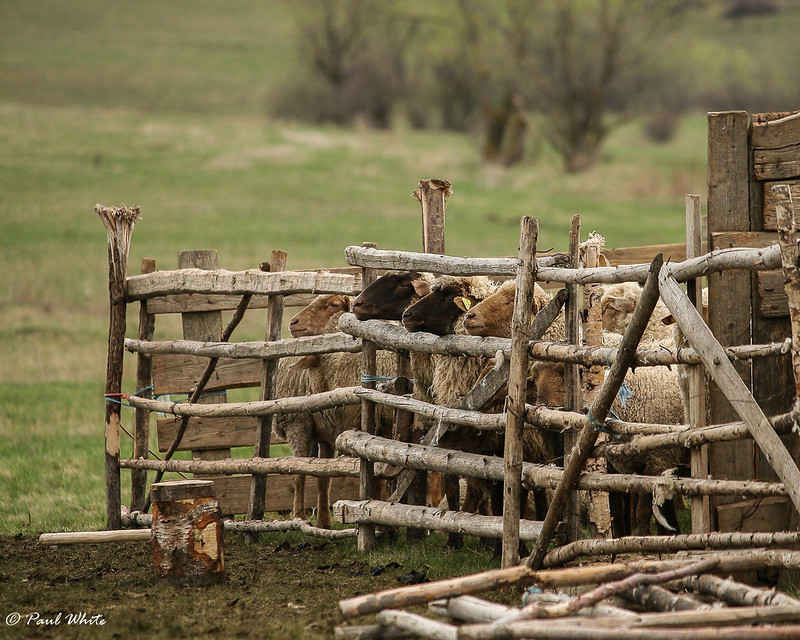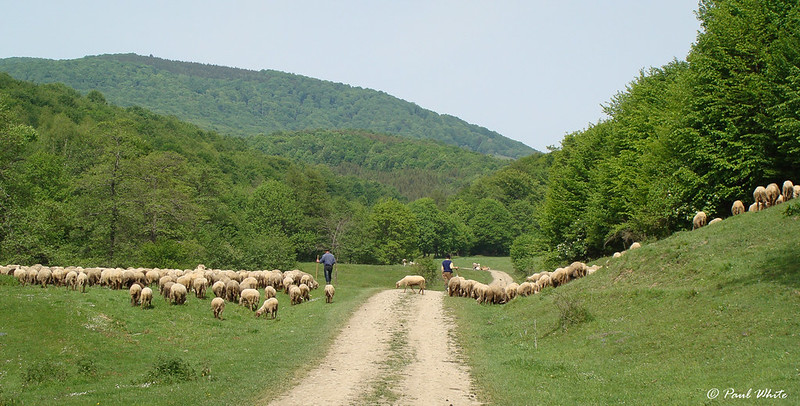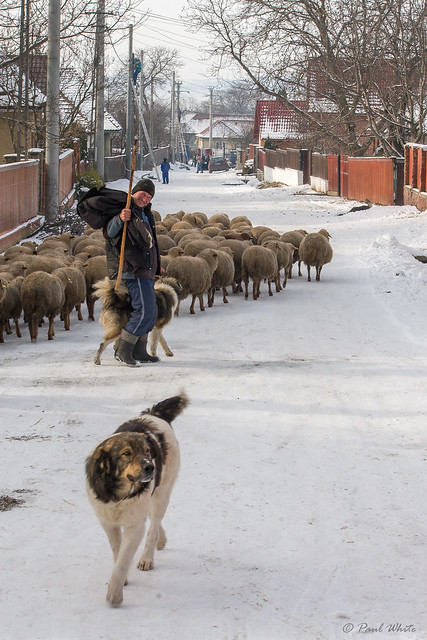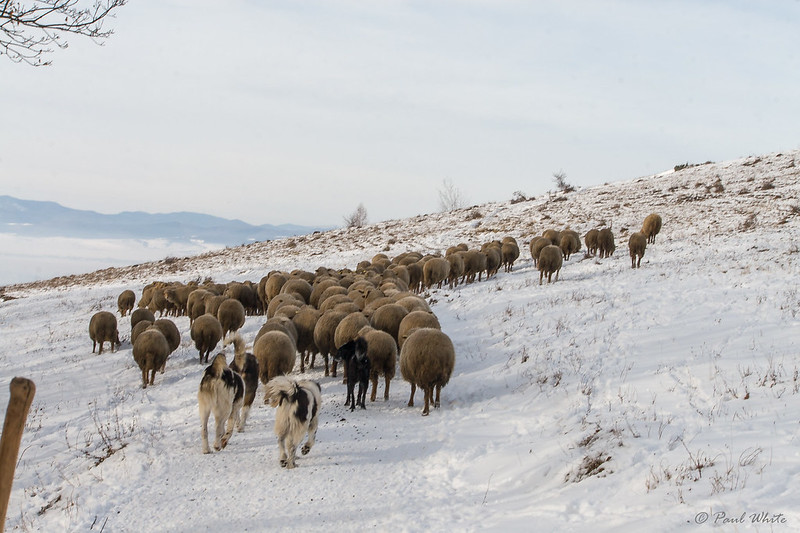Author: Paul White
This is Zorro, our twelve month old Sarplaninac livestock guardian dog (LGD) keeping close to us in local fields. He is reassuring to have around on our daily walks as bears have taken up temporary residence amongst the corn. This occurs each year in autumn which does pose some danger to farmers and walkers alike. Bears love to eat corn and will gorge themselves until full, but rather than return to the forest to sleep they often remain in the fields, sheltered and hidden by the tall stems. However, as the corn ripens the leaves dry and constantly rustle in the breeze making it hard for both humans and bears to hear each other on approach.
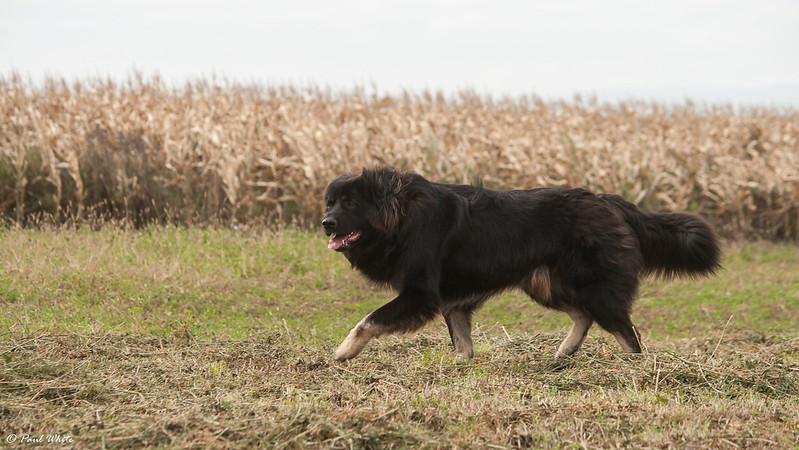
Of course one LGD is no match for a bear but Zorro often senses or notices dangers well before we do. Having a few extra seconds of warning can make all the difference. We still carry bear spray, but Zorro offers an extra layer of reassurance.
I have studied livestock guardian dogs for several years but have never had one of my own. I was always reluctant to walk in areas where there are bears with our other dogs, especially off leash. There is always the danger that after confronting a bear, a dog will lose confidence when charged, turn and run back to the owner closely followed by the bear. In general the advice is not to walk with your dog off leash.
Zorro's introduction to our family
So Zorro joined our family when slightly less than 12 weeks of age on January 18th, 2021. It was an exceptionally cold day (-11.5 Celsius) when I visited Tibor, my shepherd friend. There was a biting wind, so several of the pups huddled together with an adult LGD, including Zorro (below) looking directly at the camera.
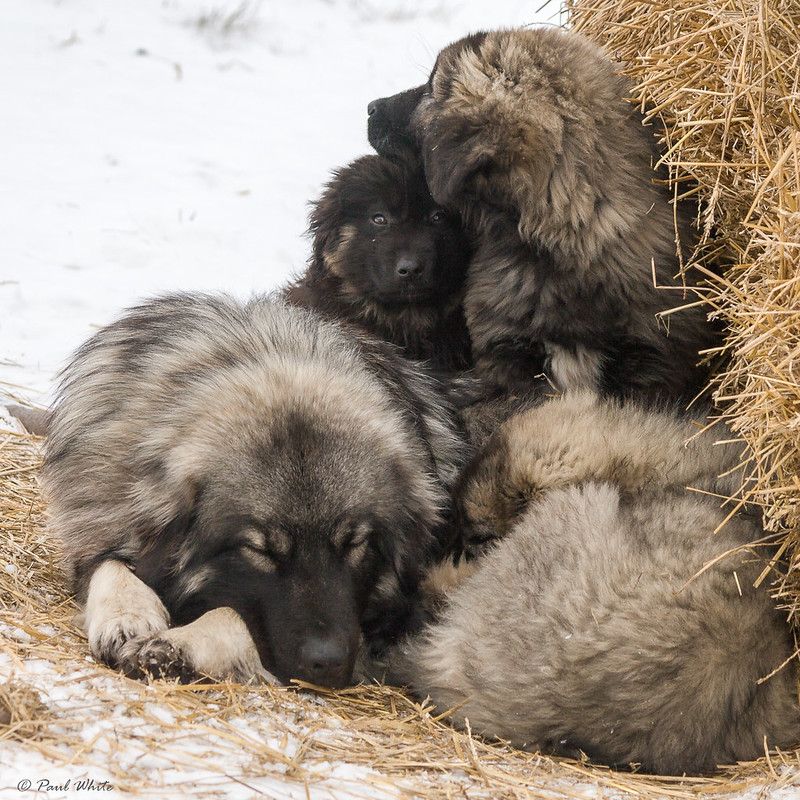
After taking several photos of Zorro, Tibor unexpectedly offered him to me as a gift! This was such a pleasant surprise and it didn't take me long to accept his generous offer. Tibor knows how much I love these dogs and knew that I had been considering getting one as a companion.
At that time we had no livestock, but now have chickens. Bears do enter gardens and kill livestock, so Zorro will have an active role in deterring predators from our garden. Earlier this year a bear entered our neighbour's garden and killed several of her chickens.

Zorro (above left) looks black in photos but he's actually dark brown in colour, with some light tan markings too. The other two grey Sarplaninac puppies are from an earlier litter and the dark dog in the middle is a Mudi (Hungarian breed of herding/driving dog).This was Zorro's last play with his puppy pack before he came home with me in the car.
By 15 weeks of age we were staggered by Zorro's rate of growth. Our vet gave calcium capsules to assist his bone development. It was a challenge getting them down his throat from day one. The vet demonstrated how to do this which involved my right hand disappearing between his pin sharp teeth with the capsule between my thumb and forefinger, I would release the capsule at the back of his throat, removing my hand quickly, holding his jaw shut, head tilted back with fingers over his nostrils which triggered him to swallow. Sounds easy right?
However, it didn't take Zorro long to find an effective wriggle technique to evade swallowing the capsules. The vet said it was important that he didn't bite the capsules as the contents could cause vomiting, so Laura started wrapping the capsules in chicken skin which he eagerly swallowed whole.


Livestock guardian dog ownership
So what lessons have I learned about LGD ownership during these last months of Zorro's development in comparison to other dogs that have been part of my life from puppy to adulthood?
I have previous experience with two stray cross breeds (both small in size), Scottish terriers, one golden retriever and one Newfoundland.
Of course each dog has it's own personality and there are often variations of temperament within any one breed. For the purposes of this article I will describe my findings in terms of all livestock guardian dog breeds inclusive of the Sarplaninac.
Should you choose an LGD for a companion?
Livestock guardian dogs are not always recommended as a first dog for an inexperienced owner. I do agree with this to a certain extent. Their working traits are to protect livestock. If they are taken on as a companion dog then you become their livestock to protect and that can be from predators or other people. They tend to be highly protective of their family. They only relax with a stranger when they are introduced and they can see you at ease with somebody new.
Socialising
If your LGD is going to be a working dog, it's important to socialise your dog well with both people and livestock from a young age. Tibor's kids are fully involved with the upbringing of their pups and I can see the difference this makes on producing a well balanced dog. If an LGD is never introduced to sheep for example they may still chase them like any other dog. It is important to remember this when walking across farmland.
Guarding and barking
Zorro is very territorial in his/our garden. Anything or anyone approaching the fencing or gate is treated as a potential threat. He can see through our side fencing so he's used to our neighbours, but he can distinguish between them and their guests.
Does Zorro bark? Yes, when guarding his territory and family, but not all the time. A dog that barks constantly is less effective at deterring threats, as predators will simply get used to it. The bark should be graduated and become more intense when a predator or unknown human approaches. You must be aware of this, especially if you live on a suburban housing estate with many neighbours. Complaints against a constant barking are one of the leading causes of LGD abandonment.
LGD's really do have the ability to project their 'voice' as a warning. Going outside and shouting at your dog to stop barking will only cause confusion as this is what guardians do, this is their job. Instead go out and see what the problem is. Maybe there is real danger out there? Zorro can't see over our two metre gate but I can with a step. If he's barking, I go out and investigate. I am part of Zorro's pack, so he expects this of me. I step up and look over. Sometimes it's a visitor, or there could be a stray dog sniffing about. Bears are also known to walk down our street. Whatever I see or don't see I let Zorro know. The tone of my voice or my actions is all that he needs.
Exercise
They need space and plenty of exercise. I would not recommend an LGD to a person living in an apartment. If we miss our daily walk because of bad weather, we can see that Zorro is less relaxed. Good long walks keeps them happy, fit and healthy.
Character and training
Zorro is independent, single minded and very curious which are common LGD traits. For me these are positive characteristics for their work in the field where they often required to make good instant decisions, without guidance from their shepherd. Most of what they do to be effective guardians is from instinct. They don't need much in the way of training for their work. But they do need good, positive experiences and exposure to people and farm animals. I would advise early use of collars and leash training, as this will make daily walks and visits to the vet much easier.
LGD's are large, they need to be to adequately protect livestock from wolves and bears. However, they are most effective in deterring predators as a pack of dogs. If they see a predator or unknown human approaching at a distance they often graduate their threat. This warning should be heeded to prevent physical confrontation.
Correction
As previously mentioned guardians can be stubborn and independent, but that does not equate to a naughty or bad dog. But they do need firm leadership from you. They do not respond well to aggressive or harsh treatment, so temper your corrections. Be firm and use the tone of your voice to send the required message. Messaging should be simple and immediate. Moaning at your dog for an hour after your dog has chewed your shoe will not be effective. Be firm with your voice and remove the shoe. Make sure that you learn the lesson too and keep shoes out of reach. These incidents often happen when a puppy is teething, so make sure that appropriate 'chews' are available and not items that you want to remain intact.
Hair shedding
An outdoor LGD tends to shed twice a year, spring and autumn, in preparation for a new summer and then winter coat. This will differ with a dog living in a house with central heating. Zorro lives outdoors most of the time. He prefers to be outside or in the garage and struggles a bit in a warm house, demonstrated with panting and drinking more water.
Veterinary services
Find a good vet and stick with that person. Zorro loves his vet, even though visits often involve needles. Trust and familiarity goes a long way with guardians.
Diet
We feed Zorro twice a day with a good quality kibble mixed with cooked chicken. Different LGD owners have varying opinions on the best diet for these dogs. Some prefer a raw diet. I do not have rigid opinions on this. I follow the advice of our vet, including calcium capsule use for the first 12 months and Zorro has developed nicely and appears healthy on it.
Food drive or aggression
Zorro never begs for food or eats quickly. Neither is he food aggressive and can be stroked when eating. This is not the same with all guardians and can be quite different when they are fed simultaneously as a working pack.
